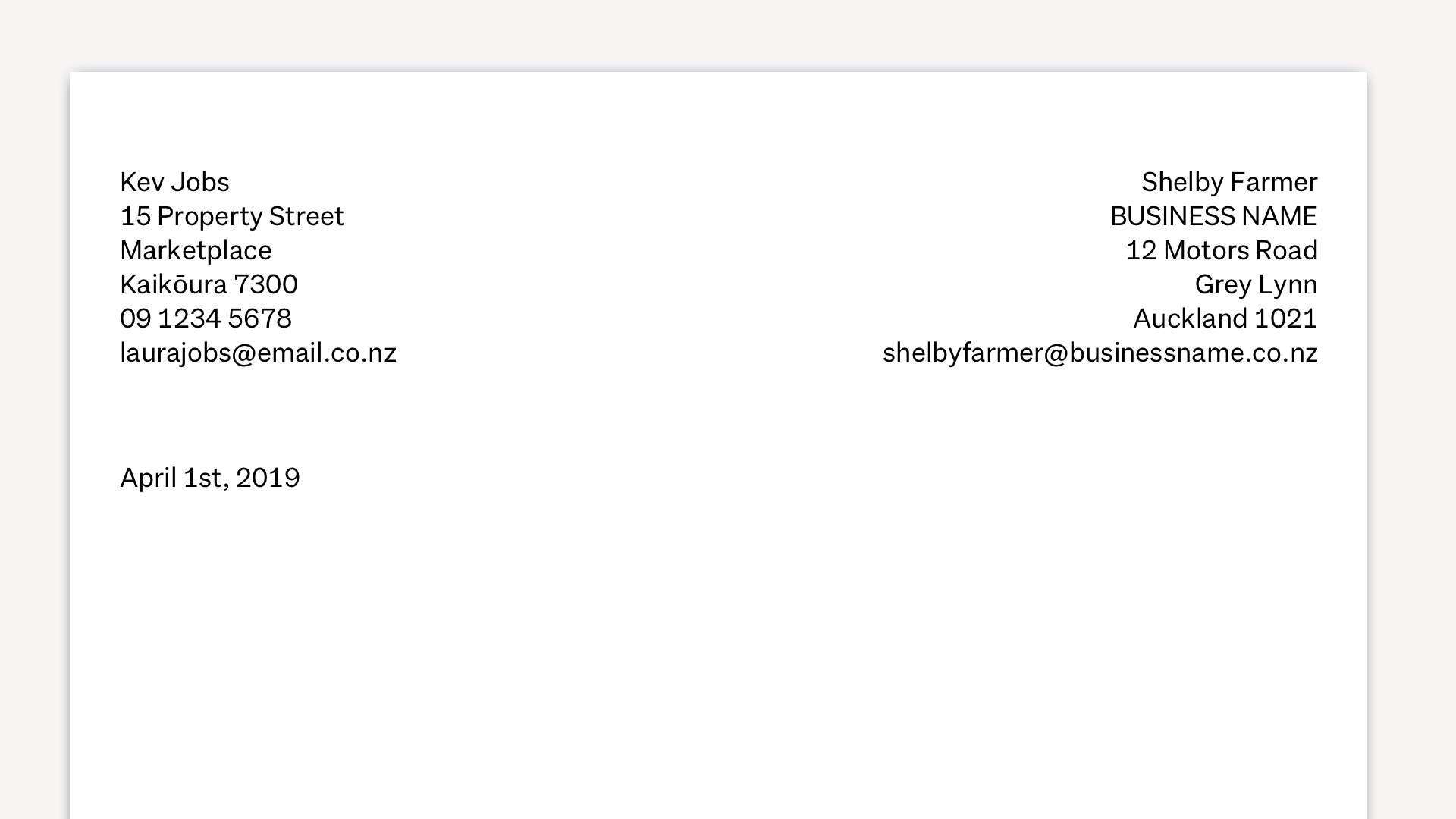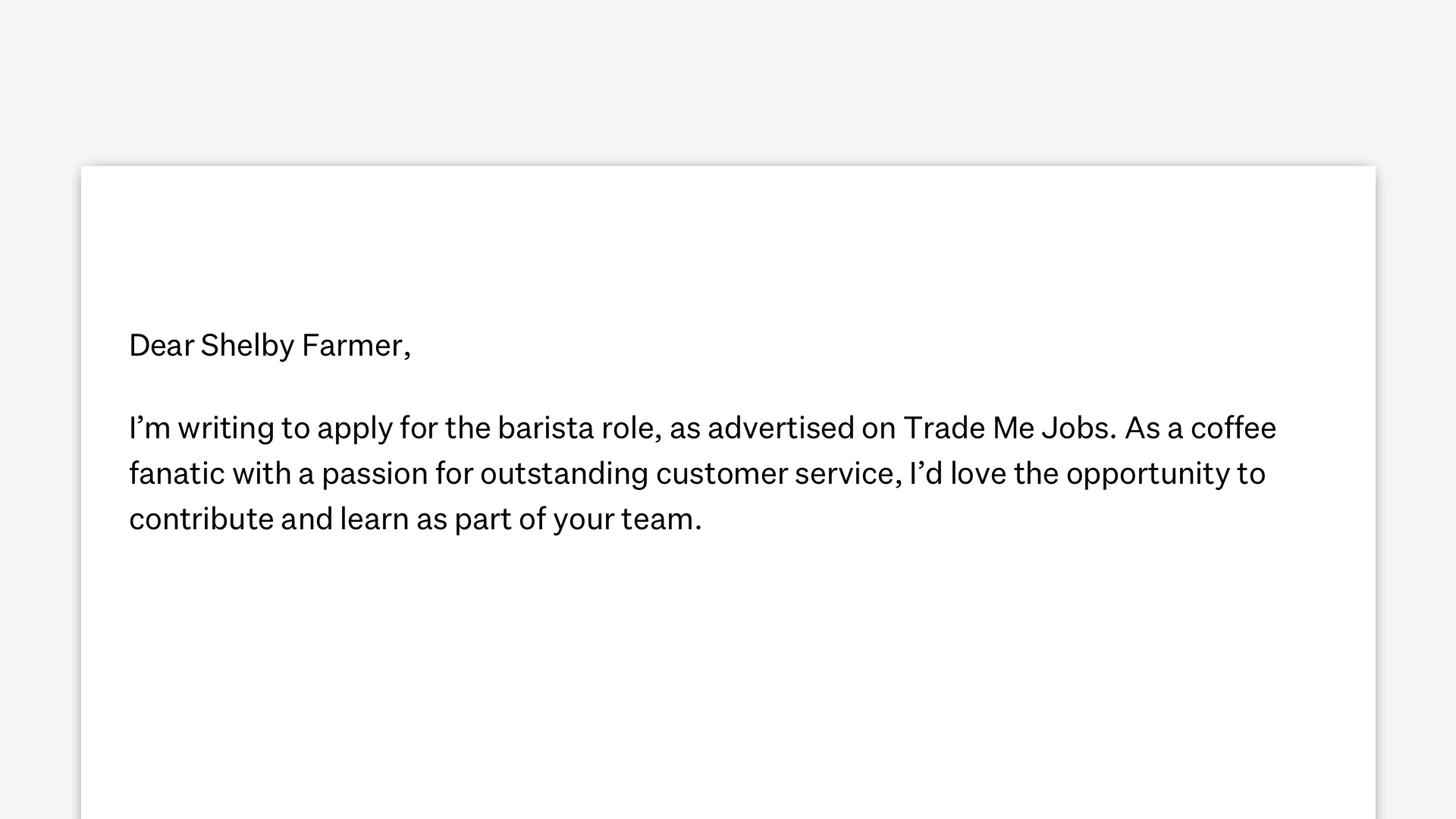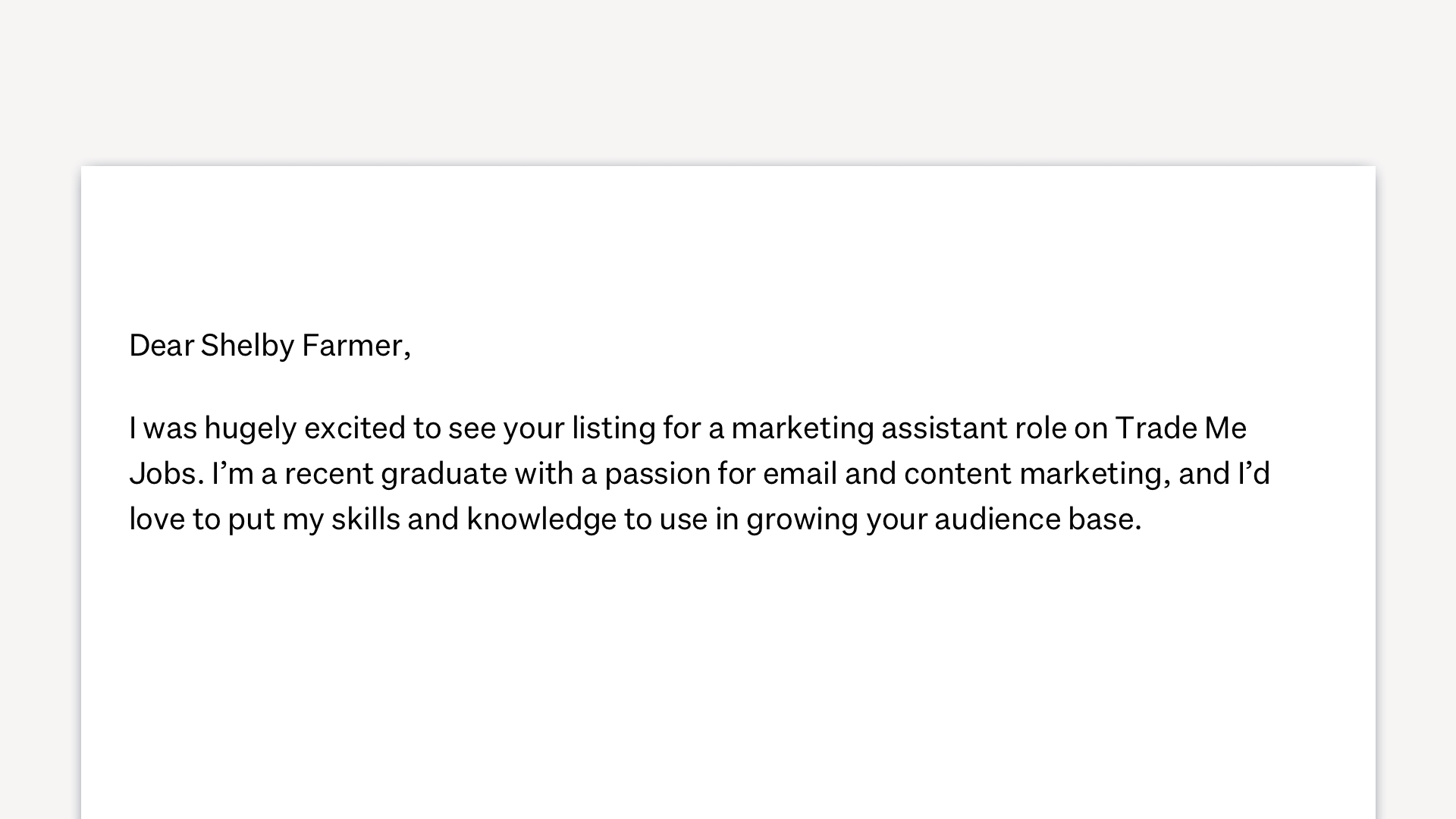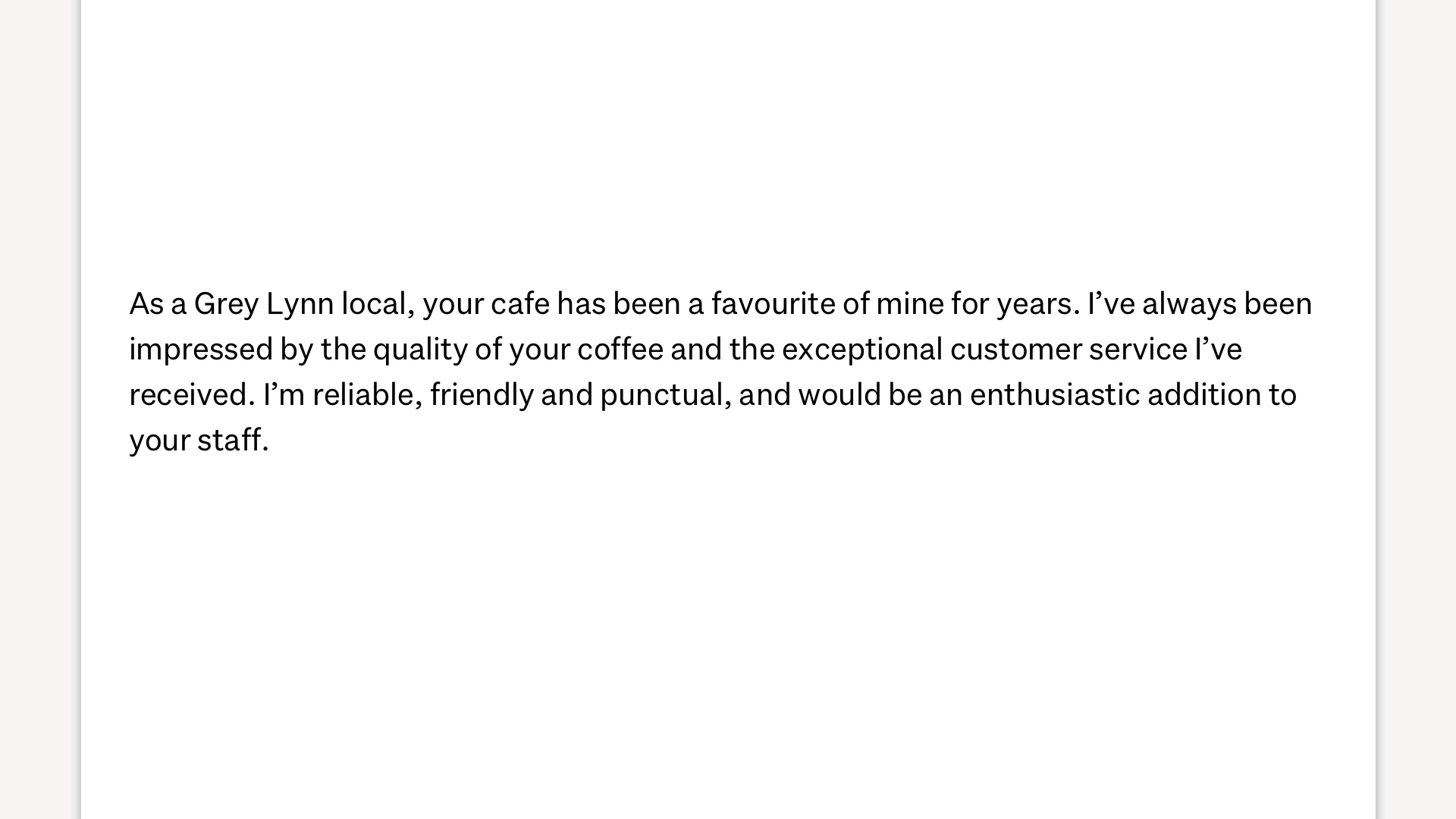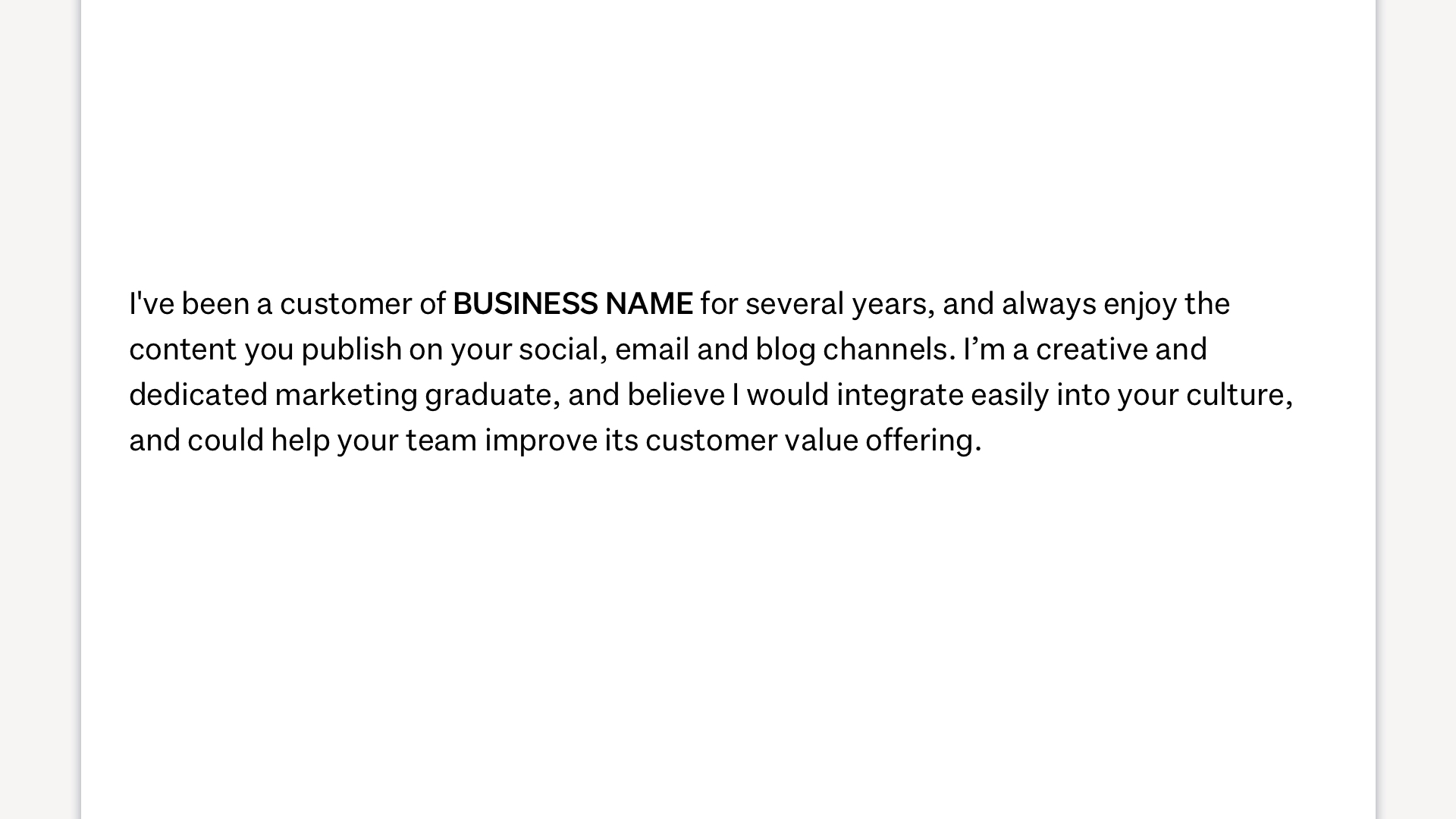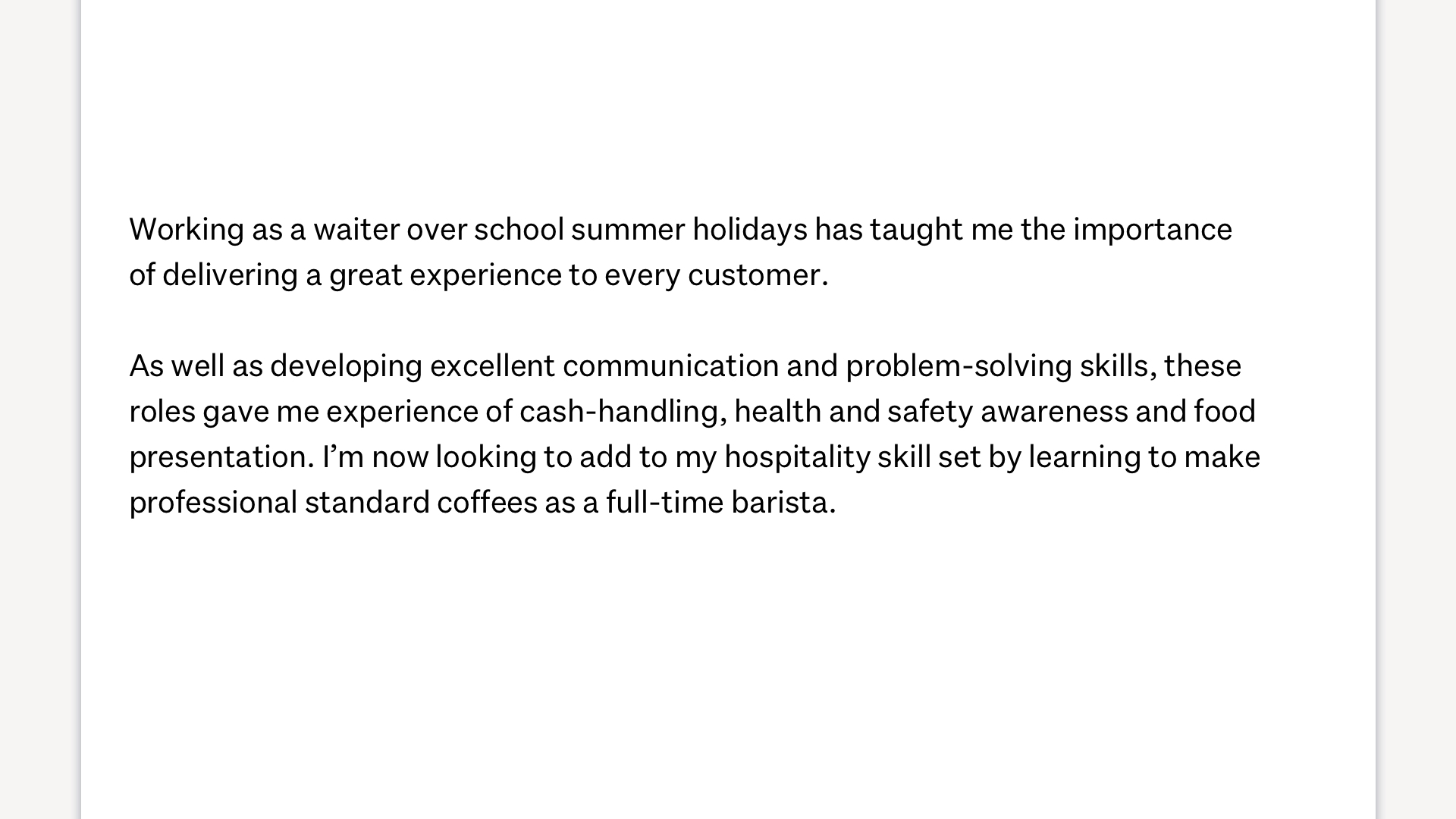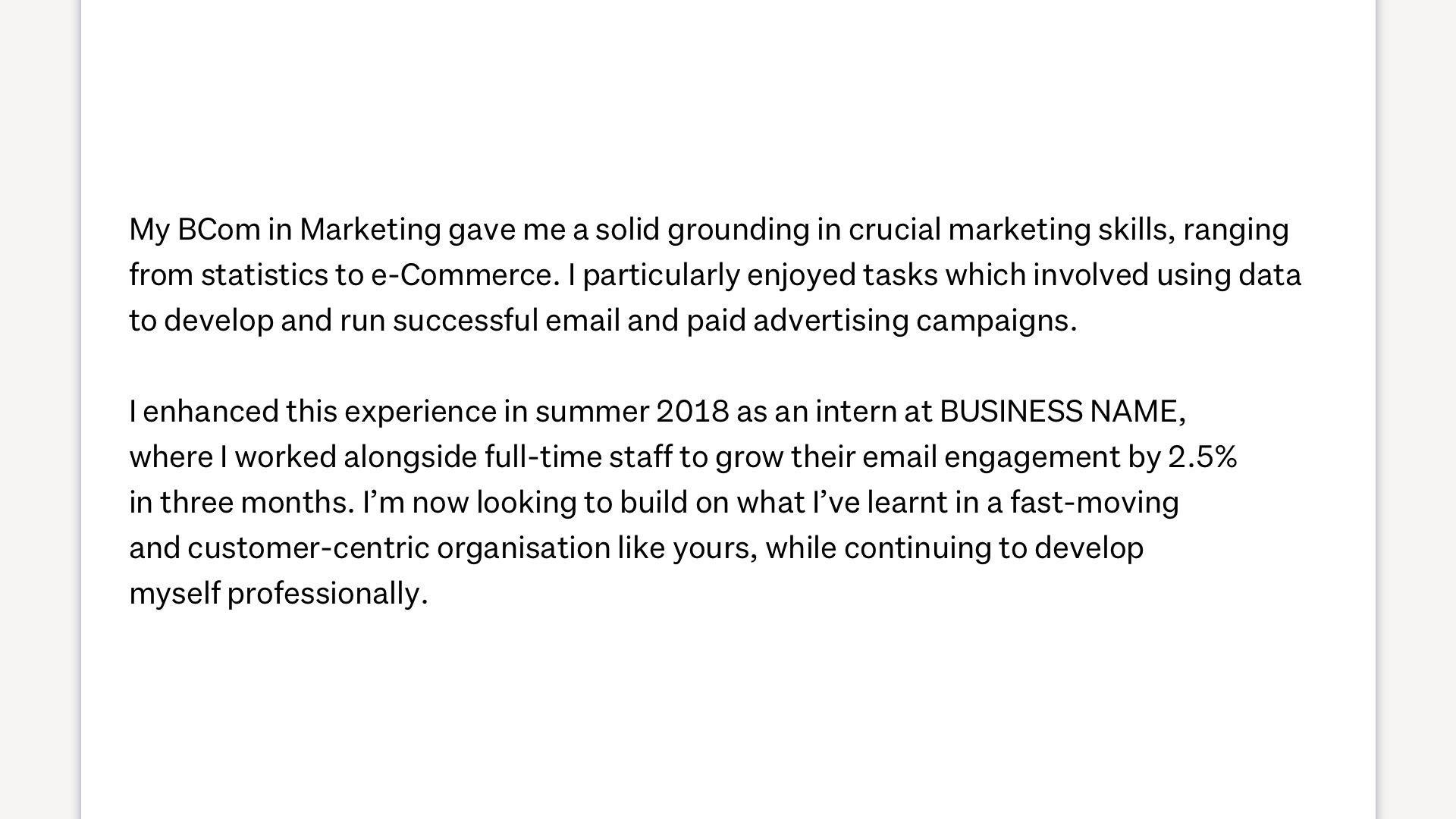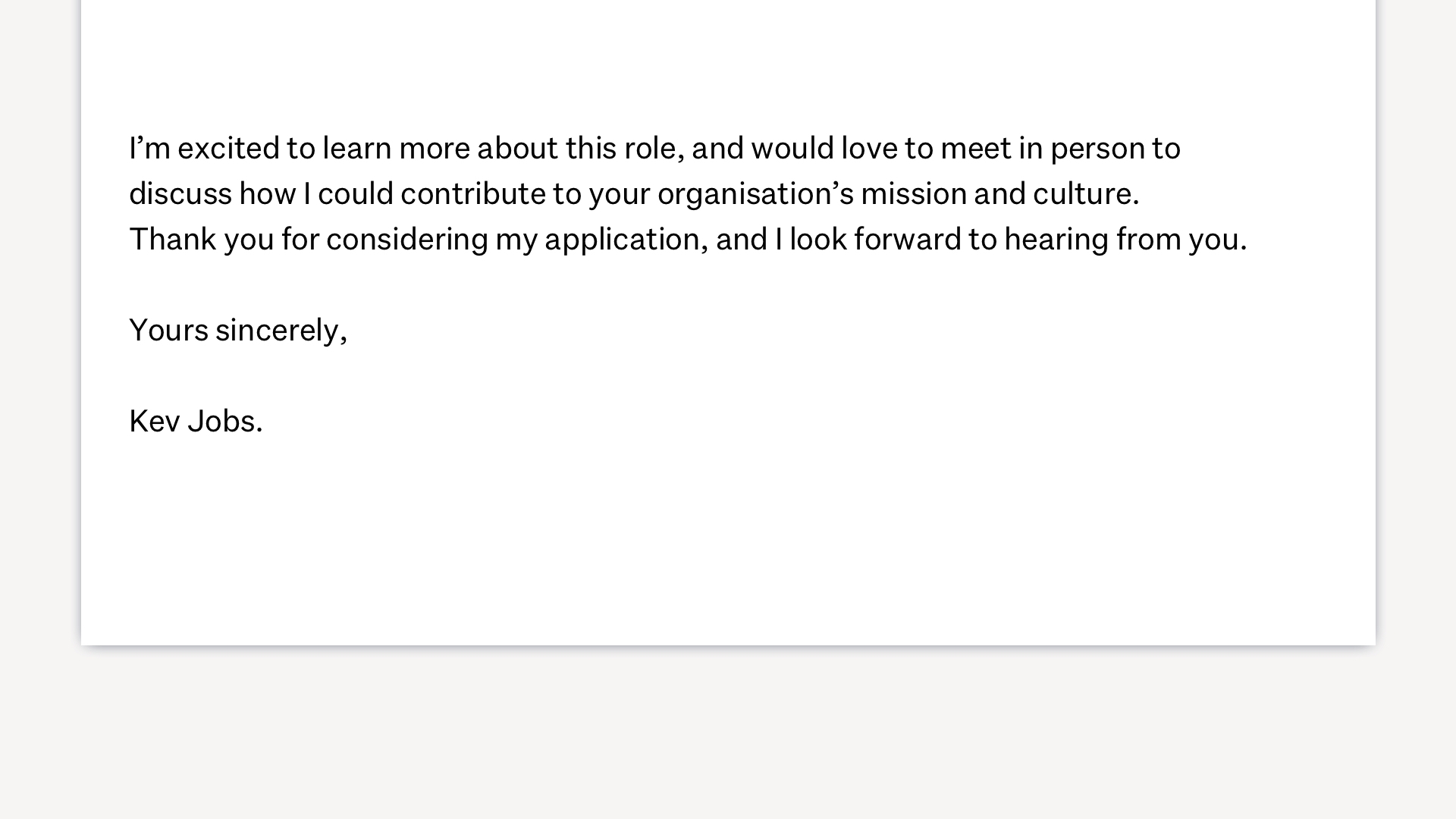Careers advice
How to write an NZ cover letter (with examples and templates)
Along with your CV, a cover letter is essential to any NZ job application. Let's get you started.
Last updated: 15 October 2025
Every New Zealand job application should include a cover letter.
This document is key to showing an employer you’re serious about their vacancy, and for demonstrating what you bring to the table. Despite its importance, many people aren’t sure how to write a cover letter – and their applications suffer as a result.
That’s why we’ve created this guide, giving you advice on everything from what to include, to how to lay it out.
We’ve also snuck in a few examples to make life even easier for you … aren’t we nice?
Cover letters vs. CVs: what’s the difference?
To understand the role cover letters play in job applications, it’s important to realise how they differ from CVs:
1. Purpose:
CVs give a broad picture of you as an applicant – providing details such as educational background and employment history. By contrast, a cover letter targets why you want this specific role, and how your skills and experience make you a great candidate.
While there will be areas of overlap as you select qualifications or abilities to draw out in your cover letter, it definitely should not be an elongated version of your CV.
2. Length
An NZ cover letter should be no longer than one page, while CVs are usually between one and two.
3. Format
The most obvious visual difference between these documents and CVs hinges around bullet points.
While your CV should be a bullet point bonanza, cover letters favour full sentences. That’s not to say you can’t have any bullets in a cover letter, just use them more sparingly.
You should include a cover letter with every job application.
What to include in a cover letter
1. Your contact info, the date and the business’ address
At the top of your cover letter should be:
- Your full name, contact details and home address
- The date you submit the application
- The business’ postal address
It should look like this:
Head up your cover letter like this.
2. Your opener
People worry about how to start a cover letter, but there’s a simple formula and structure for getting this right:
Make it personal: start with ‘dear’, and address it to a person – i.e. the hiring manager. If their name isn’t in the job listing, try a good old fashioned stalk of the company website, or ring the business and find out. ‘To whom it may concern’ is a no go.
Make it clear: organisations often list multiple vacancies at a time, so make it obvious which position you’re applying for. A sentence like, ‘I’m writing to apply for the Marketing Assistant role, as advertised on Trade Me Jobs’, will do the trick.
Make it punchy: next, add a snappy one-liner summing up why you’re interested in the role and what you’d bring to their business. Remember, you can go into more detail in the interview itself. For example:
Example 1:
Example 2:
3. Why them
A common cover letter mistake is to only focus on yourself. Before choosing you, employers want to know why you’re choosing them. This helps sort candidates who are genuinely passionate about their organisation from those who are mass applying to anything and everything.
Warning: this section is not about inflating the hiring manager's ego by flattering the company – be positive, but be thoughtful.
Example 1:
Example 2:
4. Why you
Now, it’s time to sell yourself.
This section of your cover letter is where you highlight your most relevant skills and experience.
You can draw on anything from previous work experience to certificates and qualifications. The important bit is linking whatever you mention to the job – simply listing skills is not the answer.
To do this effectively, you need to carefully study the job ad and identify what capabilities the employer values most. If your Trade Me Jobs Profile is up-to-date, you can then quickly skim your skills and experience to find those which most closely match the job description.
Top tip: the more detail you can give, the better. Helped raise sales? Great. Helped raise sales by 6%? Even better.
Example 1:
Example 2:
If you want to add some extra skills or information to this section, a bullet point list is a good option. Note: only do this after introducing your headline examples in full sentence form, as above, and keep your list to three or four concise bullets.
5. Signing off
The end of your cover letter should (politely) prompt the reader to get in touch with you to arrange the next steps. Make sure you end on a high, and continue the energy from earlier in your closing sentence, for example:
How to format a cover letter
With your content sorted, it’s now about nailing the visuals. Cover letters are usually easier than CVs in this regard, as they’re laid out like a traditional letter. However, there are a few things to bear in mind:
- What font should I use? Keep it simple, and the same as on your CV. If your font is hard to read, or too small, the letter will end up in the wrong pile.
- How long should a cover letter be? New Zealand cover letters should be under one page long.
- Should I use paragraphs? Would you read huge, unbroken chunks of text? We doubt it, so make sure to break up your cover letters into paragraphs.
- What are the correct cover letter margins? Leave these at their default setting so your cover letter has plenty of blank space, and doesn’t look crowded.
All done? Not quite.
Perhaps the most important stage of cover letter writing is proofreading. After all that hard work, you don’t want a few silly typos or poor punctuation letting you down.
So check it yourself, then get someone else to have a look, then have a final glance.
Once you’re happy, it’s time to attach it to your application, and hit send.
Author
Other articles you might like


